7 Iconic American Landmarks: Symbols of a Nation’s Identity and Heritage
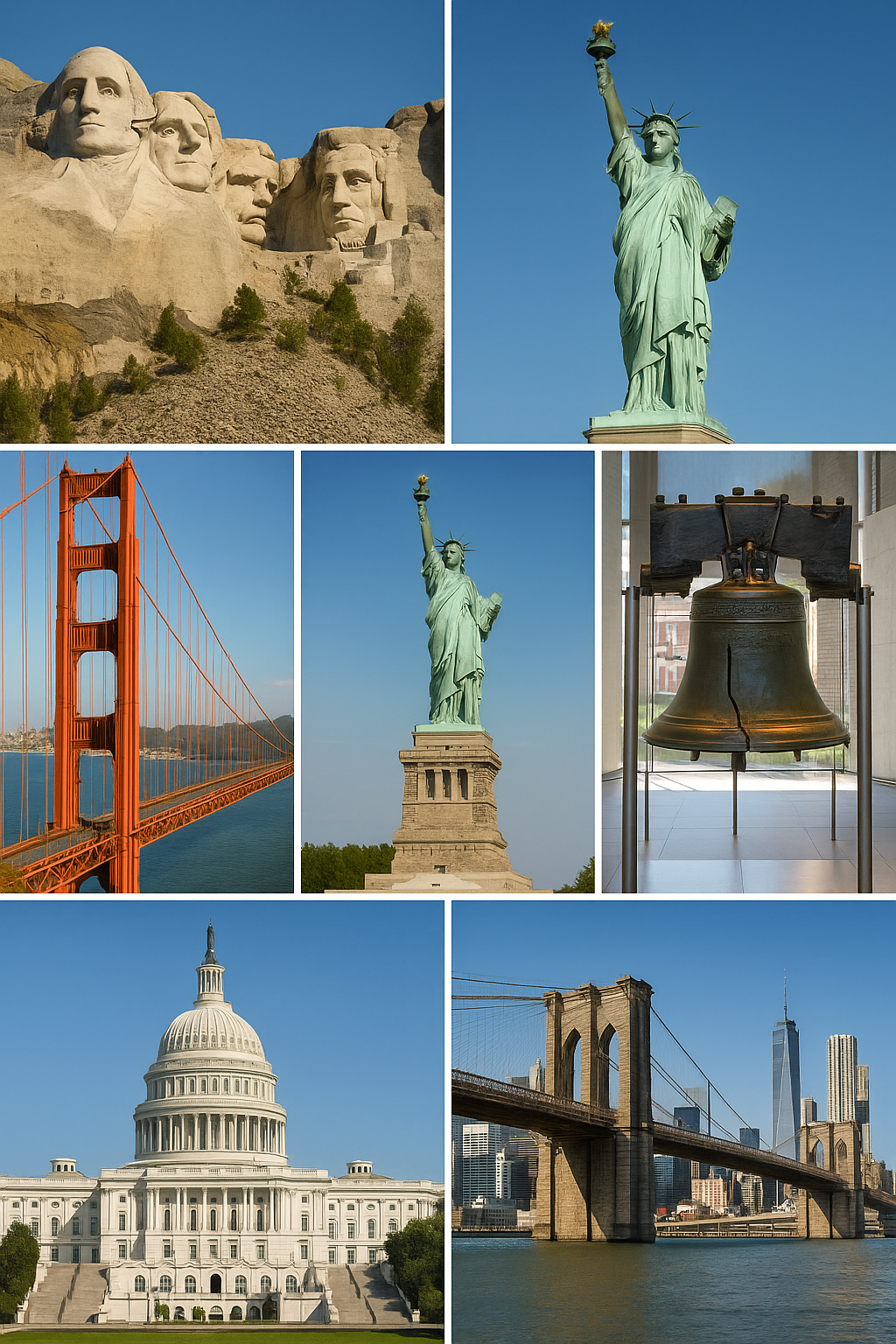
The United States is a vast nation defined by its rich tapestry of history, culture, innovation, and natural beauty. From soaring monuments to breathtaking natural wonders, the country’s most iconic landmarks represent the spirit of America—its resilience, diversity, ingenuity, and freedom. These landmarks not only draw millions of visitors every year but also serve as powerful symbols of national pride and shared memory.
Here are 7 of the most iconic American landmarks, each telling a unique story of the country’s past, ideals, and identity.
1. The Statue of Liberty (New York, NY)
Overview:
- Official name: Liberty Enlightening the World
- Location: Liberty Island, New York Harbor
- Unveiled: October 28, 1886
- Height: 305 feet (from ground to torch)
Historical Significance:
Gifted by France to the United States to commemorate the centennial of American independence and the enduring friendship between the two nations, the Statue of Liberty quickly became a symbol of freedom, democracy, and hope.
It greeted millions of immigrants arriving at Ellis Island during the late 19th and early 20th centuries and remains a global icon of liberty and opportunity.
Design:
- Designed by French sculptor Frédéric Auguste Bartholdi
- Internal structure by Gustave Eiffel (of Eiffel Tower fame)
- The torch represents enlightenment and the broken chains at her feet symbolize liberation from oppression.
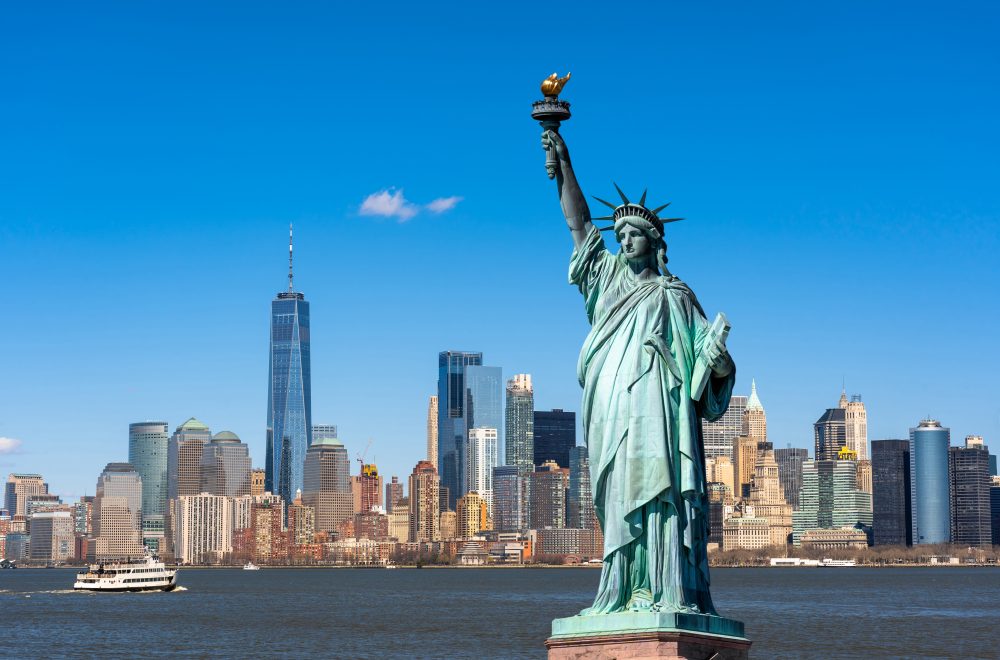
2. Mount Rushmore National Memorial (Keystone, South Dakota)
Overview:
- Depicts: George Washington, Thomas Jefferson, Theodore Roosevelt, Abraham Lincoln
- Completed: 1941
- Sculptor: Gutzon Borglum
- Carved into: Mount Rushmore in the Black Hills
Historical Significance:
Mount Rushmore honors four U.S. presidents who represent foundational moments in American history:
- Washington: Founding of the nation
- Jefferson: Expansion (Louisiana Purchase)
- Roosevelt: Development and reform
- Lincoln: Preservation during the Civil War
Controversy:
The memorial is also controversial due to its location on sacred Lakota Sioux land, and critics argue it represents the colonial legacy of American expansion.
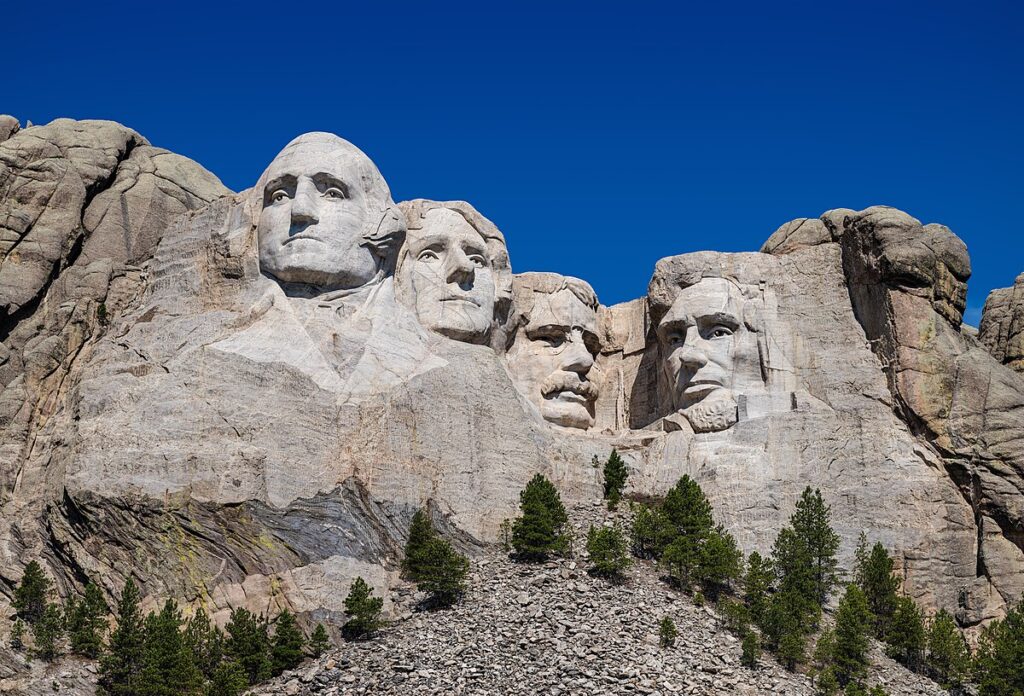
3. The White House (Washington, D.C.)
Overview:
- Built: 1792–1800
- First occupant: President John Adams
- Address: 1600 Pennsylvania Avenue NW
- Architect: James Hoban
Historical Significance:
The White House is both the official residence and workplace of the U.S. president. It has served every U.S. president since 1800 and is the ultimate symbol of American executive power and democracy.
Notable Events:
- Burned by British troops in 1814 during the War of 1812, later rebuilt.
- Site of numerous historic speeches, decisions, and meetings.
Design and Features:
- Neoclassical architectural style
- Includes the Oval Office, West Wing, Rose Garden, and East Room
- Hosts ceremonial events and diplomatic receptions
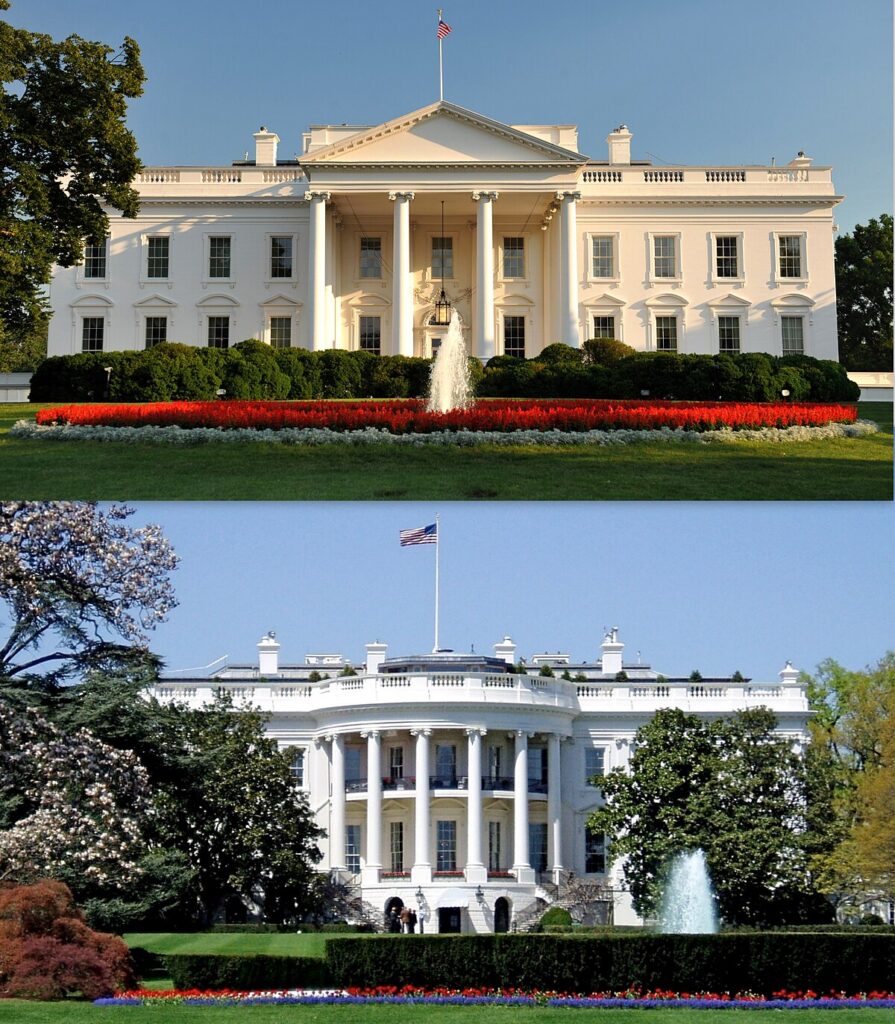
4. The Lincoln Memorial (Washington, D.C.)
Overview:
- Dedicated: May 30, 1922
- Designer: Henry Bacon
- Sculptor of Lincoln statue: Daniel Chester French
- Location: West end of the National Mall
Historical Significance:
Honoring Abraham Lincoln, the 16th president of the United States, the memorial symbolizes unity, freedom, and equality.
It was here that Martin Luther King Jr. delivered his “I Have a Dream” speech in 1963 during the March on Washington, cementing the memorial’s role in civil rights history.
Design:
- Modeled after a Greek Doric temple
- Contains inscriptions of Lincoln’s Gettysburg Address and Second Inaugural Address
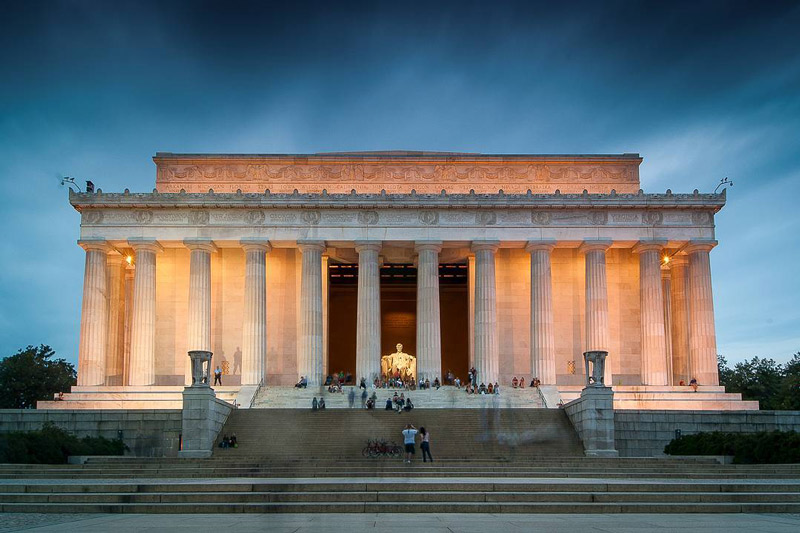
5. The Grand Canyon (Arizona)
Overview:
- Length: 277 miles
- Depth: Over a mile deep
- Formed by: Colorado River over millions of years
- Declared a National Park: 1919
Geological and Natural Significance:
The Grand Canyon is one of the world’s greatest natural wonders. Its stunning layers of red rock preserve a record of Earth’s geological history spanning nearly 2 billion years.
It is also home to unique ecosystems, Native American sacred sites, and draws over 6 million visitors annually.
Cultural Relevance:
- Sacred to Indigenous peoples like the Havasupai, Hopi, Hualapai, and Navajo.
- Represents natural beauty, resilience, and the vastness of the American landscape.
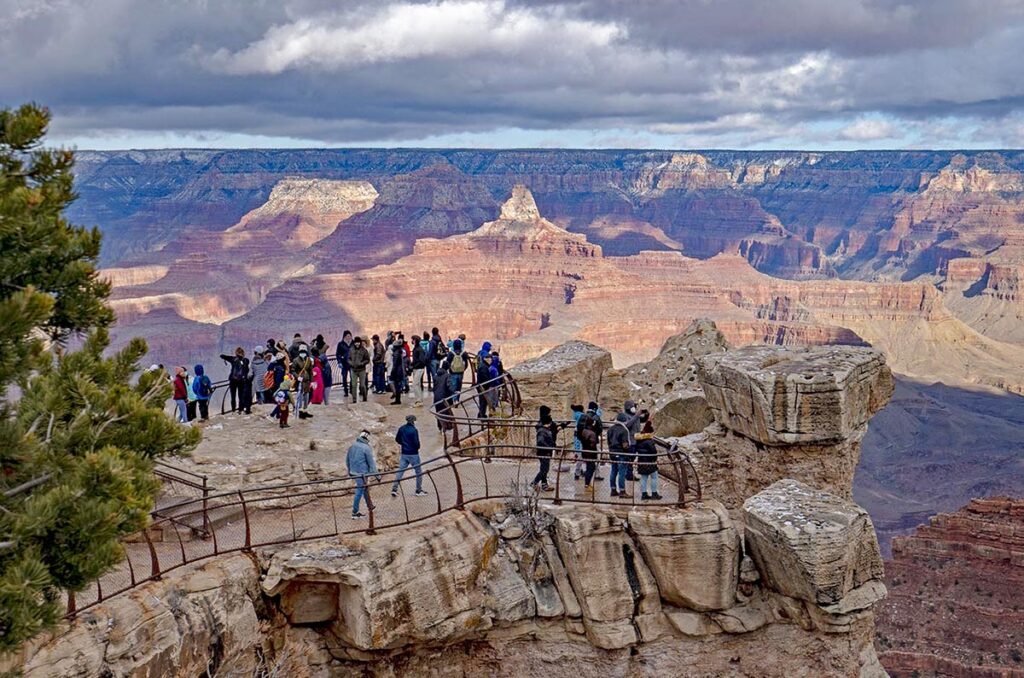
6. The Golden Gate Bridge (San Francisco, California)
Overview:
- Completed: 1937
- Length: 1.7 miles
- Color: International Orange
- Engineer: Joseph Strauss
Historical Significance:
When it was completed, the Golden Gate Bridge was the longest suspension bridge in the world. It quickly became a global symbol of innovation and engineering mastery, connecting San Francisco to Marin County.
During the Great Depression, the bridge was seen as a beacon of progress, creating jobs and boosting morale.
Cultural Impact:
- One of the most photographed bridges in the world
- Icon of California’s identity and American creativity

7. Independence Hall (Philadelphia, Pennsylvania)
Overview:
- Built: 1753
- Originally: Pennsylvania State House
- UNESCO World Heritage Site
Historical Significance:
Independence Hall is where both the Declaration of Independence (1776) and the U.S. Constitution (1787) were debated and adopted, making it the birthplace of American democracy.
It was home to the Second Continental Congress and the Constitutional Convention.
Legacy:
- Houses the Liberty Bell, another enduring symbol of freedom
- A sacred site for those who value liberty, governance, and the American experiment
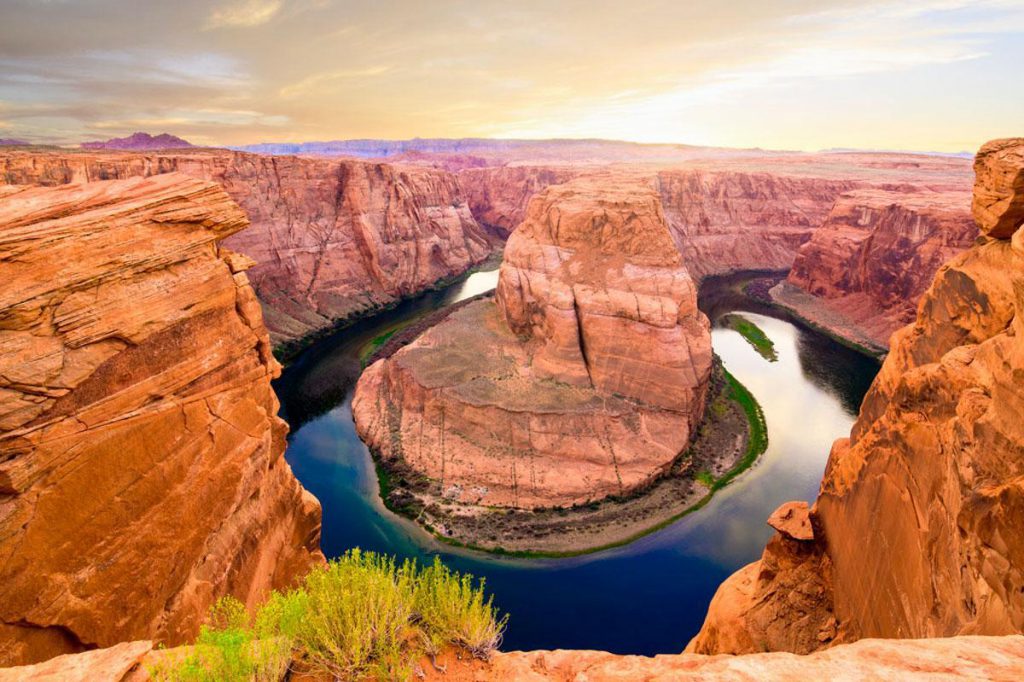
Conclusion
These seven iconic landmarks collectively represent the diverse story of the United States—a blend of revolution, expansion, freedom, innovation, and natural beauty. Whether carved in stone, forged in steel, or etched in the memories of millions, these places continue to inspire people from all walks of life.
They are not just tourist attractions—they are living monuments to America’s past, present, and future.




